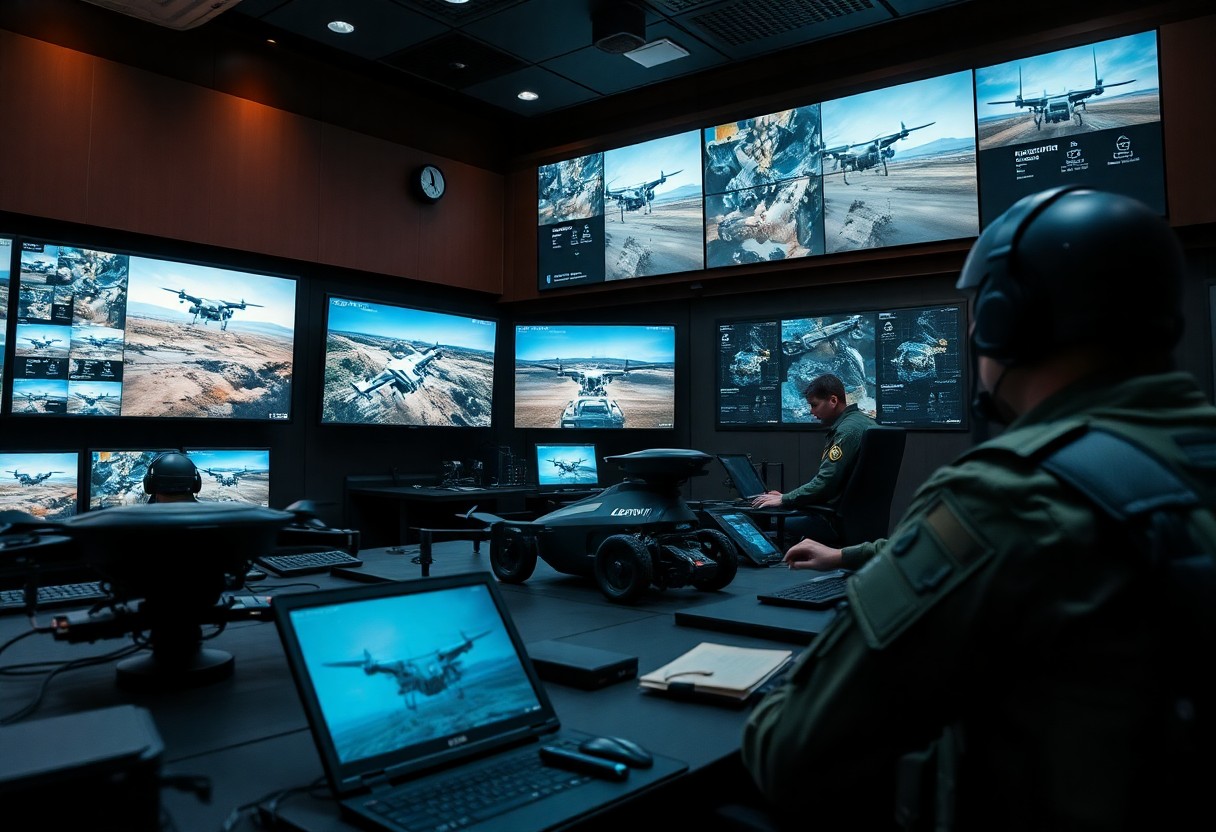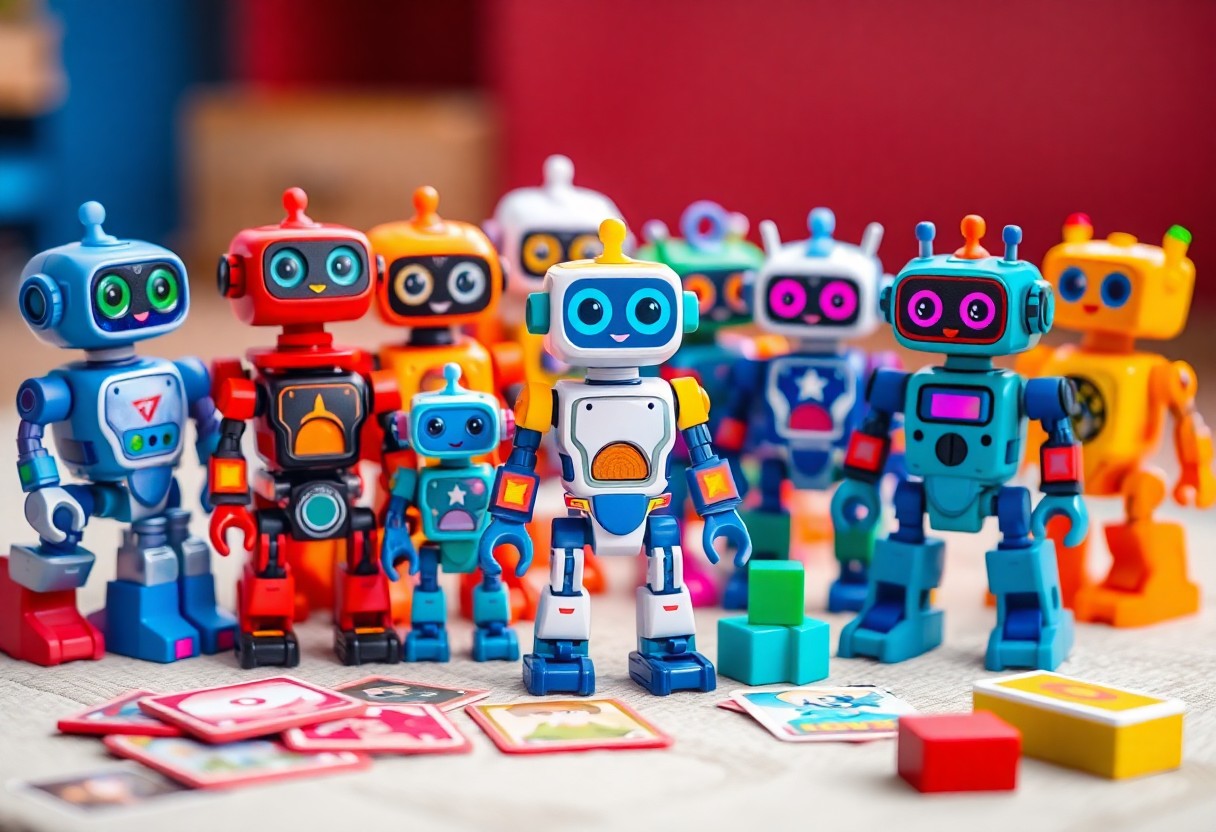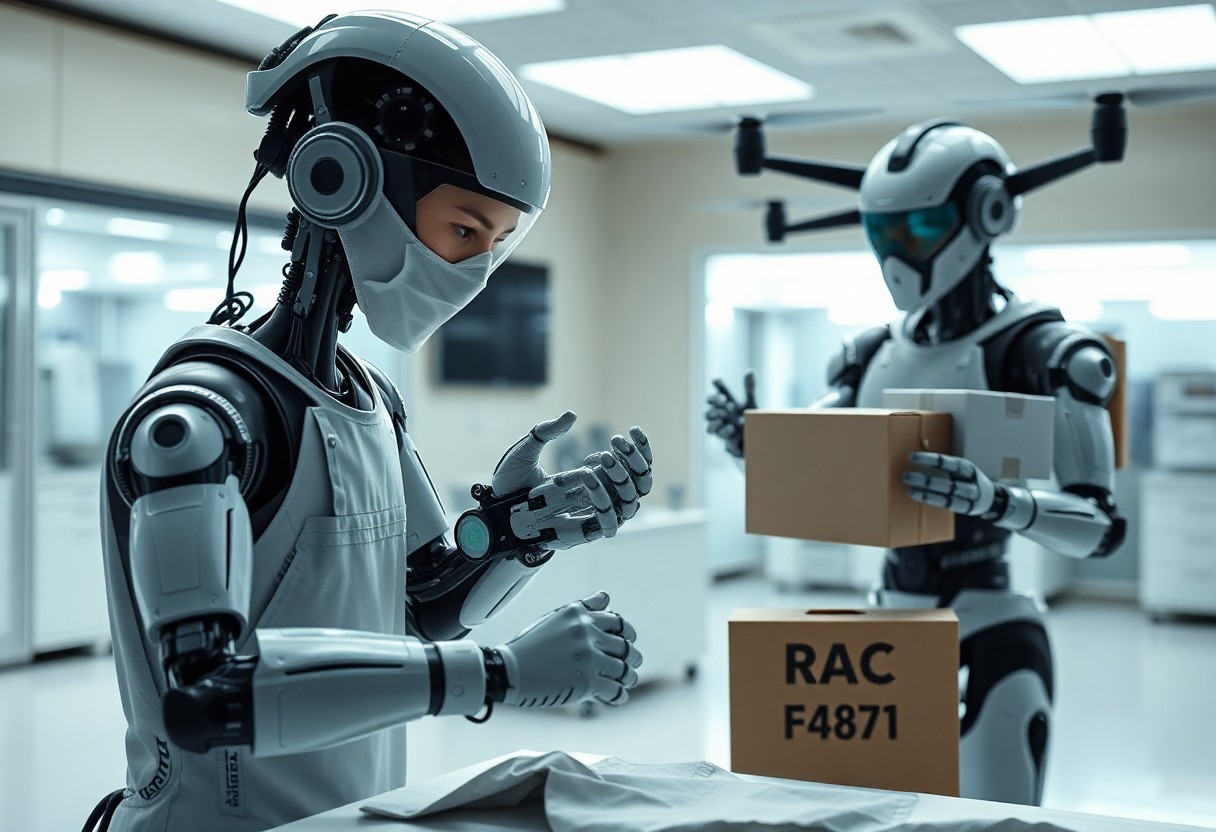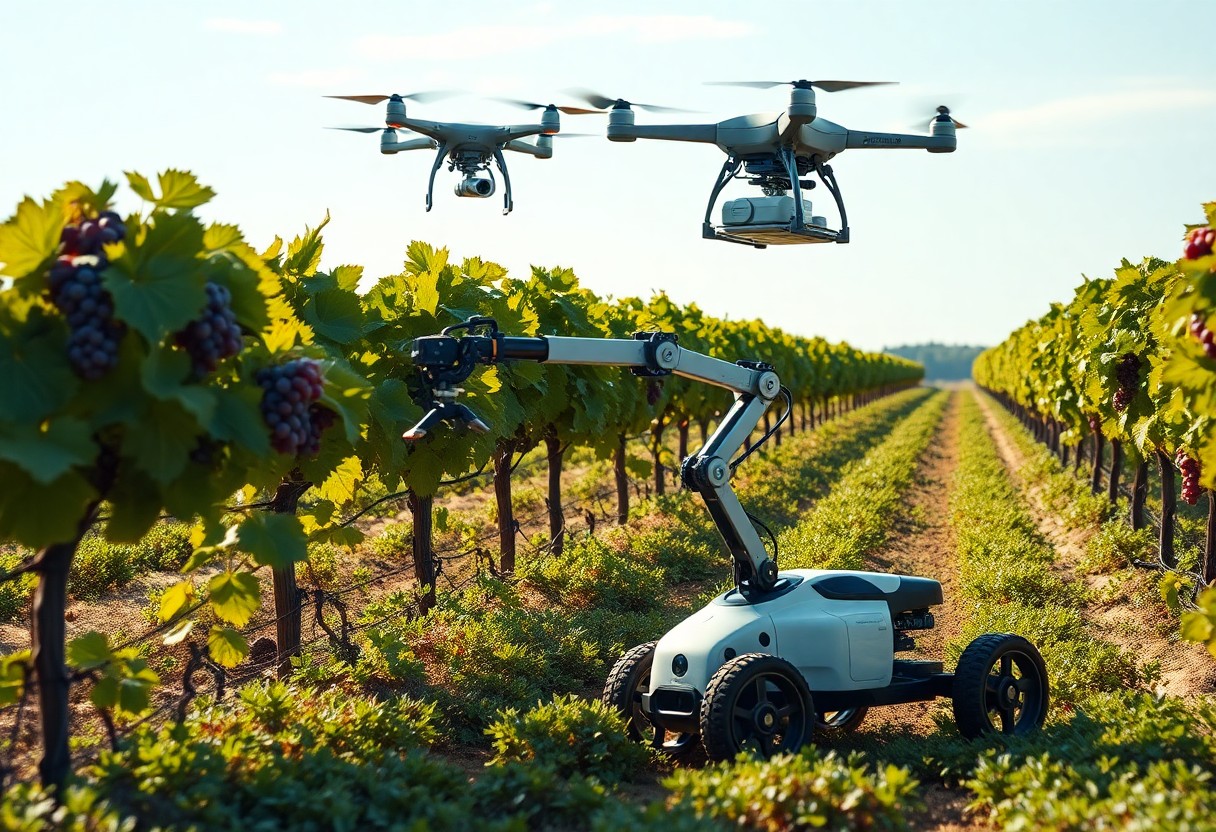Many advancements in robotics are playing a significant role in enhancing situational awareness in Ukraine’s evolving landscape. You may be interested to learn how these technologies are providing real-time data, improving communication, and aiding in decision-making for military and civilian operations. From drones surveying conflict zones to ground robots assisting in rescue missions, these innovative tools are redefining how information is gathered and shared, ultimately contributing to safer and more informed responses in challenging environments.
Autonomous Ground Systems: The Eyes on the Battlefield
Autonomous ground systems are redefining battlefield dynamics, acting as the vigilant eyes on the frontline. These advanced robots traverse challenging terrains, gathering data and relaying vital information back to command centers, ultimately allowing you to monitor enemy movements and make informed decisions. Not only do they reduce the risk to human personnel, but their capabilities in remote reconnaissance enhance your overall situational awareness, ensuring a more strategic approach to operations.
Tactical Surveillance Drones: Gathering Real-Time Intelligence
Tactical surveillance drones are important for collecting real-time intelligence in conflict zones like Ukraine. These unmanned aerial vehicles (UAVs) can stream live footage back to your command units, providing a comprehensive view of enemy positions and movements. With their ability to fly at low altitudes and navigate challenging conditions, these drones deliver a strategic advantage by allowing you to assess threats quickly and accurately.
Robotic Ground Vehicles: Enhancing Mobility and Safety
Robotic ground vehicles play a vital role in enhancing mobility and safety for your troops on the battlefield. Equipped with advanced sensors and imaging technology, these robots can traverse harsh terrains while transporting supplies or detecting mines, significantly minimizing exposure to danger.
For instance, the use of robotic ground vehicles in current operations has streamlined logistics, allowing for safe transport of ammunition and medical supplies directly to frontline units without putting personnel in harm’s way. Advanced models are even designed with obstacle avoidance technology, ensuring they can navigate challenging landscapes autonomously. This adaptability is crucial, providing you with a dependable means to maintain operational support while safeguarding human life. By integrating these systems into your strategy, you can improve supply chain efficiency, save lives, and maintain tactical advantages on the battlefield.
Aerial Robotics: Revolutionizing Reconnaissance
Aerial robotics, especially drones, have transformed reconnaissance efforts in Ukraine. Equipped with advanced cameras and sensors, these unmanned aerial vehicles (UAVs) offer real-time intelligence, enabling your military forces to assess enemy movements and terrain with unparalleled efficiency. Their ability to cover vast areas quickly and silently allows for constant monitoring while reducing the risk to personnel. This capability is especially vital in a conflict scenario where timely information can mean the difference between success and failure.
Drones in Urban Environments: Overcoming Challenges
Operating drones in urban settings presents distinct challenges, such as navigating through complex infrastructure and avoiding potential collisions with buildings or power lines. However, innovative technology helps mitigate these risks. Advanced GPS systems, collision-avoidance algorithms, and improved battery efficiency make urban reconnaissance safer and more reliable. This allows operators, like you, to gather critical data while maintaining the safety of both the drone and civilian lives below.
The Role of AI in Processing Aerial Data for Situational Context
Artificial intelligence plays a pivotal role in analyzing the vast amounts of data collected by drones. With machine learning algorithms, AI can rapidly process imagery and identify patterns that might elude human analysts. This capability enhances situational awareness by correlating real-time data with historical intelligence, identifying threats, and providing actionable insights. You gain a strategic advantage as this immediate processing offers a clearer understanding of the battlefield landscape.
AI’s integration in aerial data processing drastically improves decision-making capabilities. For instance, when drones capture images during a reconnaissance mission, AI algorithms can quickly differentiate between civilian structures and potential enemy assets based on historical patterns and outcomes. This swift analysis helps commanders respond more effectively to dynamic situations on the ground. Additionally, AI can assist in prioritizing reported data, helping you focus on the most pressing threats or changes in the environment, thus enhancing operational effectiveness. With these advancements, you’re equipped with crucial insights that support strategic planning and execution in a highly fluid combat landscape.

Integrating Robotics into Command and Control Frameworks
Incorporating robotics into command and control frameworks enhances operational efficiency and situational awareness. By establishing seamless communication between robotic systems and command centers, military leaders can efficiently manage resources and respond to emerging threats. This integration allows for a comprehensive view of the battlefield, enabling commanders to allocate troops and technologies more effectively. The collaboration between humans and machines fosters a modernized approach to military tactics in the complex environment of Ukraine.
Enhancing Decision-Making with Robotic Insights
Robotic systems provide real-time insights that significantly improve decision-making capabilities on the field. With advanced analytics and sensor technology, these systems gather critical information, such as troop movements and environmental conditions, allowing commanders to make informed choices swiftly. This timely data ensures that your strategies can adapt to the rapidly evolving landscape, ultimately influencing mission success.
Real-Time Data Fusion from Multiple Robotic Sources
Leveraging real-time data fusion from various robotic sources creates a comprehensive operational picture that enhances situational awareness. By synthesizing information from aerial drones, ground robotics, and satellite imagery, command centers can track developments with unparalleled accuracy. This integration transforms raw data into actionable intelligence, allowing for quick and effective response to emerging threats or opportunities.
For example, drone reconnaissance provides a bird’s-eye view of enemy movements, while ground-based robots collect intelligence on foot traffic and supply routes. By merging this diverse data, your command can develop a holistic understanding of the battlefield. This fusion helps predict enemy actions and identify potential vulnerabilities, enabling you to stay one step ahead in strategic planning. The synergy of insights allows for improved mission execution and a higher probability of operational success.
The Psychological Impact of Robotics on Troop Morale and Community Safety
Robotics positively influences troop morale by empowering soldiers with advanced tools that enhance their effectiveness on the battlefield. The presence of unmanned systems reduces the perceived risks associated with missions, as they can perform dangerous tasks such as reconnaissance and bomb disposal. For civilians, robotic systems contribute to a sense of safety, knowing that protective measures are in place. This dual effect—strengthening military resolve and reassuring the community—creates a more resilient environment amid conflict.
Building Confidence through Technological Support
Your awareness of robotic capabilities can foster confidence among soldiers. Knowing that they have access to drones and robotic units for surveillance and logistical support alleviates pressure during high-risk operations. This technological backup allows troops to focus on strategic decision-making while robots handle tasks that would have been dangerous or previously impossible.
Community Interaction: Robotic Support in Civilian Protection
The integration of robotics into civilian protection efforts offers significant reassurance to local populations. Systems like drones monitor areas for potential threats, assisting humanitarian efforts by delivering supplies or scouting for safe routes during evacuations. This proactive approach not only enhances community safety but also builds a cooperative environment between military forces and civilians.
In specific cases, robotic initiatives have led to improved outcomes in civilian protection. For example, drones have been deployed to assess damage and deliver food and medical supplies in regions impacted by conflict. These actions not only address immediate needs but also strengthen the bond between military forces and civilians, fostering trust and collaboration. Enhanced community interactions through robotic assistance create an necessary support network, vital for rebuilding and recovery efforts in conflict-affected areas.
Future Directions: The Next Frontier in Robotic Enhancements
As the conflict in Ukraine evolves, the future of robotics holds extensive potential for further enhancing situational awareness on the battlefield. Advances in artificial intelligence, machine learning, and autonomous systems will likely lead to vehicles and drones that can make real-time tactical decisions, adjust to enemy strategies, and even predict potential threats. These developments promise to augment human capabilities, allowing for quicker response times and more accurate assessments of the battlefield environment.
Emerging Technologies on the Horizon
Next-generation technologies like swarm robotics and advanced sensor networks are set to redefine situational awareness. Swarm robots, working in harmony, can provide broader surveillance coverage and respond more rapidly to threats in dynamic combat scenarios. Meanwhile, improved sensors integrated into these systems will yield richer data streams, enabling analysts to make informed decisions based on real-time insights.
Ethical Considerations in Robotic Deployment
The deployment of robots in military contexts raises important ethical questions surrounding accountability, privacy, and the potential for misuse. As you integrate more robotic systems into operations, it becomes necessary to define clear guidelines to ensure that these technologies are used responsibly. Balancing the benefits of enhanced situational awareness with the risks of dehumanization and unintended consequences is vital for lasting peace and security.
Incorporating ethical frameworks into the deployment of robotics requires engagement with stakeholders, including military leaders, policymakers, and civilians, to facilitate robust discussions about accountability and transparency. For instance, ensuring that humans remain in the decision-making loop can prevent over-reliance on automated systems that could misinterpret data or operate outside of intended parameters. By fostering a culture of responsibility and ethical consideration, you can contribute to a strategic orientation that prioritizes not only effectiveness but also humanitarian standards in military operations.
Final Words
Now you can appreciate how robotics in Ukraine are significantly enhancing situational awareness on the battlefield. By integrating drones, ground robots, and advanced sensors, these technologies allow you to gather real-time intelligence, improve reconnaissance efforts, and make better-informed decisions. As you consider the impact of such innovations, it becomes clear that robotics are not just tools, but crucial assets that transform the landscape of modern warfare and civilian safety in conflict zones.







